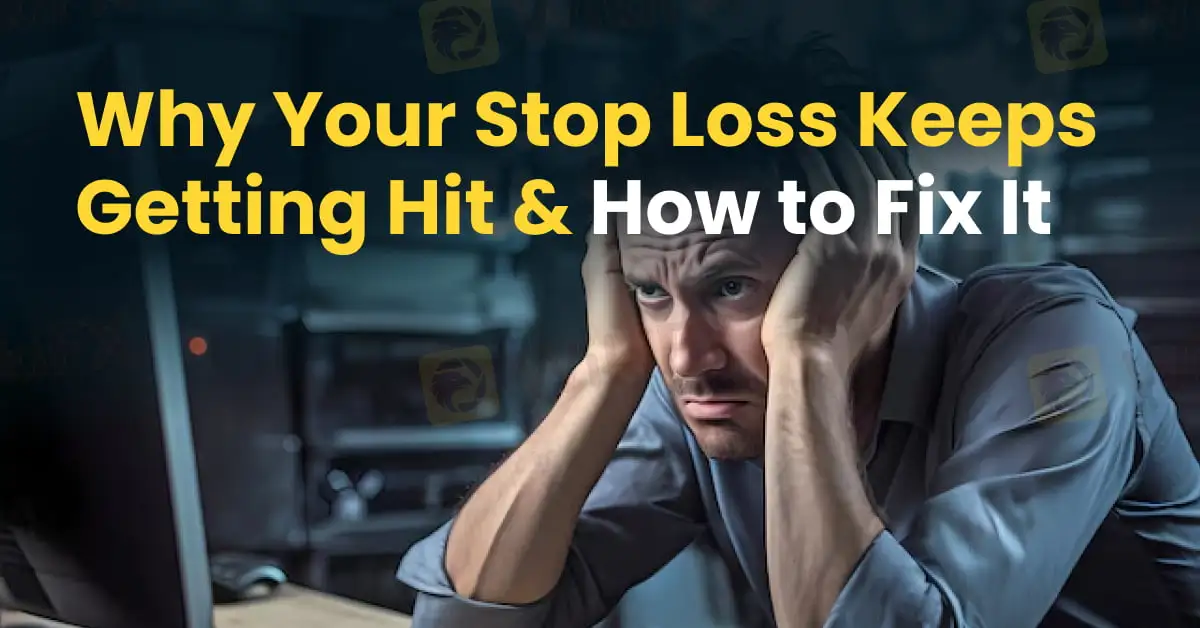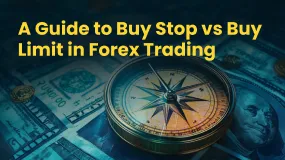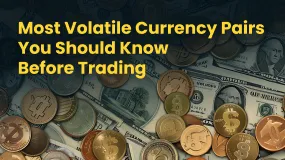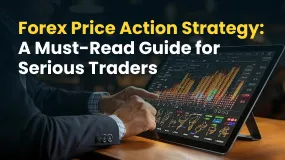简体中文
繁體中文
English
Pусский
日本語
ภาษาไทย
Tiếng Việt
Bahasa Indonesia
Español
हिन्दी
Filippiiniläinen
Français
Deutsch
Português
Türkçe
한국어
العربية
Why Your Stop Loss Keeps Getting Hit & How to Fix It
Abstract:Many new traders run into the same frustrating problem. They analyse the market, place a trade, and watch the price go against them just enough to hit their stop loss. Then, like a bad joke, the price moves exactly in their predicted direction. Read this article to learn how to fix this issue for good!

Many new traders run into the same frustrating problem. They analyse the market, place a trade, and watch the price go against them just enough to hit their stop loss. Then, like a bad joke, the price moves exactly in their predicted direction. Sound familiar?
This isn‘t just bad luck but usually a sign that the trade wasn’t set up properly. While risk management is important, its not enough on its own. To avoid getting stopped out too early, traders need better timing and more accurate entry points.

Here are a few common reasons why stop losses get hit before the trade moves in the right direction:
- Entering Too Early
Many beginners are too eager. They jump into a trade before the market confirms their idea. That means the price might still move around and test levels before taking off, and your stop gets hit during that noise.
- Stop Loss Too Close to Price
A lot of traders place their stop loss too tight, just below a recent low or above a high. These are often spots the market retests before making a move, so its easy to get stopped out for no real reason.
- Not Considering Market Conditions
Markets don‘t move the same way all the time. What works during a strong trend won’t work in a sideways market. If you dont adjust your strategy, your stop loss may be in the wrong place.
- Chasing Risk-Reward Ratios
Aiming for a good risk-to-reward ratio like 1:2 sounds smart, but trying to force trades into this framework can lead to stop losses that dont fit the actual market behaviour.

The real purpose of a stop loss is to get you out when you‘re clearly wrong, not just to keep you “safe.” If your trade idea is still valid but your stop gets hit anyway, then the problem isn’t the stop loss. Its likely your entry was off.
To trade well, you need more than just a risk plan. You need to enter at the right place, with confirmation that your idea makes sense in that moment. Only then can a stop loss really work as intended.

To improve your results, try these simple but powerful steps:
Wait for confirmation. Dont enter just because you think the market will move; instead, look for signs that it already has.
Use bigger timeframes. They give clearer signals and help you avoid random price movements.
Put your stop where the trade truly fails. Dont just choose a number that feels “safe”, but make sure it marks the point where your idea would actually be wrong.
In short, trading is not just about being right. It‘s about being right at the right time and in the right place. That’s the key to making your stop loss work for you, not against you.

Disclaimer:
The views in this article only represent the author's personal views, and do not constitute investment advice on this platform. This platform does not guarantee the accuracy, completeness and timeliness of the information in the article, and will not be liable for any loss caused by the use of or reliance on the information in the article.
Read more

A Guide to Buy Stop vs Buy Limit in Forex Trading
Want to make a mark in forex trading by seizing hidden growth opportunities or preventing capital loss? Learn the art of locating orders. With an in-depth understanding of order functionality involving the impact on trades, traders can successfully navigate the forex market. As far as buying is concerned, traders need to acquaint themselves with a buy limit and a buy stop. These two orders play a critical role in helping traders enter and exit the market efficiently.

Most Volatile Currency Pairs You Should Know Before Trading
Do you think that trading in the most volatile currency pairs is a loss-making proposition? Maybe you are missing out on the profit waiting for you! Yes, you still need to be tactical and strategic when opening and closing positions. However, the increased possibility of dramatic price movements in currency pairs opens up avenues for higher profits while also exposing you to market risks. In this article, we will discuss the most volatile forex pairs worldwide. Read on!

Forex Price Action Strategy: A Must-Read Guide for Serious Traders
Seeking a successful run in forex trading? You need to master the forex price action strategy. Many of your fellow traders are using it to continue earning profits in a volatile market environment. Price action in trading analyzes the performance of a currency pair and provides hints about its potential future direction. If you find that the currency pair price is likely to surge in your price action analysis, taking a long position is advised. If it suggests a price fall, consider taking a short position.

D. Boral Capital agrees to a fine as a settlement with FINRA
On August 6, 2025, the Financial Industry Regulatory Authority (FINRA) announced that D. Boral Capital agreed to a censure and a $125,000 fine as part of a settlement for failing to maintain the minimum required net capital.
WikiFX Broker
Latest News
Charles Schwab Forex Review 2025: What Traders Should Know
Olymptrade Review 2025: Is It Safe or a Risky Bet?
The Debt And Deficit Problem Isn't What You Think
Currency Calculator



